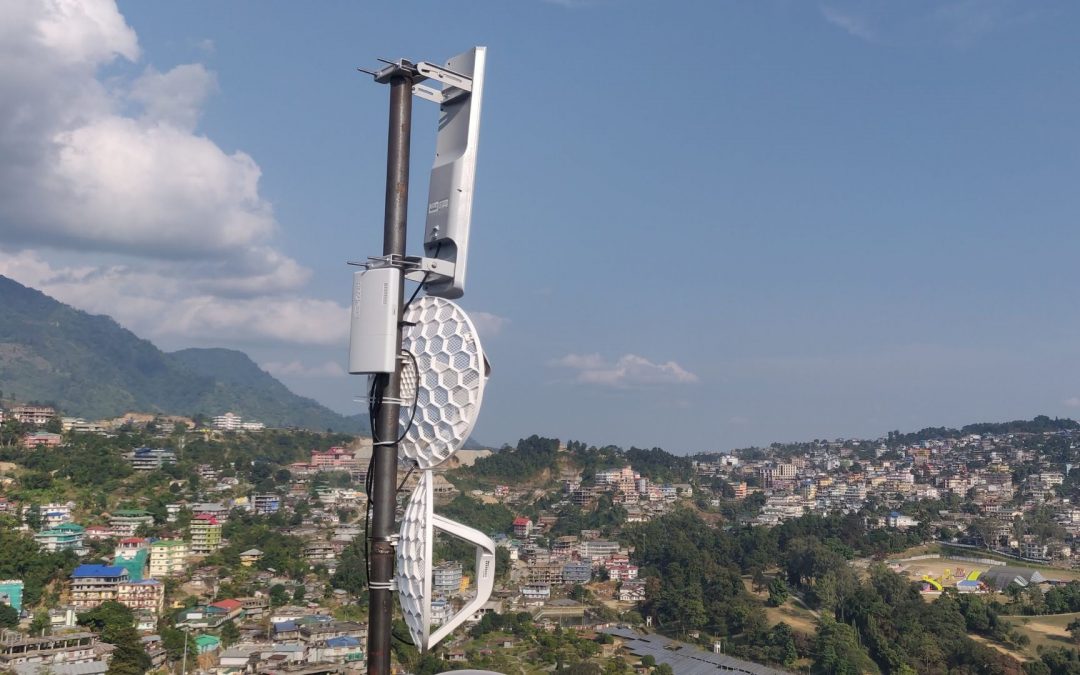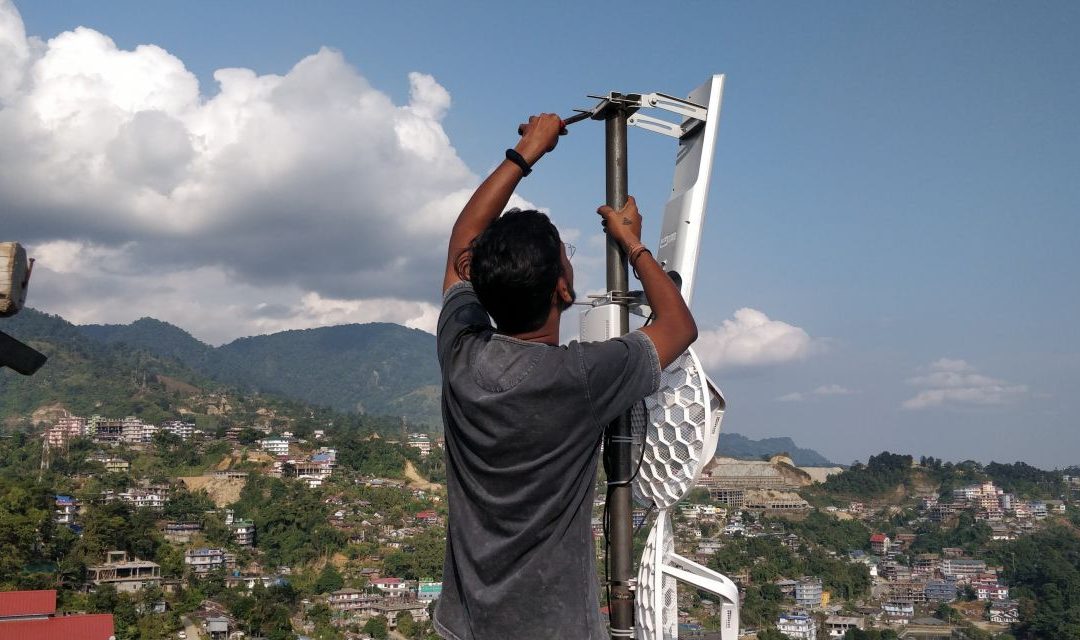
by Jinesh Parekh | Dec 30, 2024 | Digital Divide |
The Ultimate Guide to Internet Usage Statistics in India (2025 Edition)
India is a burgeoning digital economy with internet usage growing exponentially year after year. As one of the largest online markets in the world, understanding India’s internet usage patterns, statistics, and trends is crucial for businesses, policymakers, and researchers alike. This comprehensive article dives deep into the statistics surrounding internet users in India, breaking down urban vs. rural adoption, broadband penetration, mobile data consumption, and more.
Table of Contents
- Overview of Internet Users in India
- Urban vs. Rural Internet Usage
- Mobile Internet Usage
- Broadband Penetration and Growth
- State-Wise Internet Penetration
- Demographics of Internet Users in India
- E-Commerce and Internet Usage
- Challenges in Rural Connectivity
- Future Trends and Projections
1. Overview of Internet Users in India
India boasts the second-largest population of internet users globally, with over 900 million internet users as of 2025. This number has grown significantly from just 100 million in 2010, showcasing a remarkable digital transformation.
- Internet penetration rate: 65% of India’s population.
- Annual growth: Internet users have grown at a rate of 8–10% annually over the last five years.
- India is expected to cross the 1 billion internet users milestone by 2027, according to industry projections.
Key drivers of this growth include affordable mobile data, increased smartphone penetration, and government initiatives like Digital India.
2. Urban vs. Rural Internet Usage
The internet landscape in India is starkly divided between urban and rural areas.
- Urban internet users: Account for approximately 55% of total internet users, with penetration rates as high as 88% in Tier-1 cities.
- Rural internet users: Comprise around 45% of the user base, growing rapidly at a 16% annual rate.
- Rural penetration: Currently stands at 37%, up from just 10% in 2015.
Despite urban areas dominating usage, rural India represents a massive growth opportunity, with government programs and private sector investments driving increased connectivity.
3. Mobile Internet Usage
Mobile phones dominate how Indians access the internet, thanks to affordable smartphones and cheap data plans.
- Mobile internet users: Over 750 million, accounting for 83% of total internet users.
- Data consumption: India is the world’s largest consumer of mobile data, with users averaging 20 GB per month per user in 2025.
- Key enablers: Reliance Jio’s disruptive pricing and widespread availability of 4G networks have fueled this growth.
The introduction of 5G services in 2022 has further accelerated mobile data adoption, especially in metropolitan areas.
4. Broadband Penetration and Growth
While mobile dominates, broadband internet has also seen significant growth.
- Broadband connections: Crossed 300 million subscriptions in 2025, a 20% year-on-year increase.
- Fixed broadband penetration: Remains low at around 10% but is growing steadily due to fiber optic expansion by companies like JioFiber, Airtel Xstream, and BSNL.
- Top cities for broadband: Mumbai, Delhi, Bangalore, and Chennai lead broadband adoption, with penetration rates exceeding 50% in urban households.
5. State-Wise Internet Penetration
Internet usage is not evenly distributed across India, with some states showing significantly higher adoption rates than others.
- Highest penetration: Kerala (82%), Delhi NCR (80%), and Goa (78%) lead in internet penetration.
- Lowest penetration: States like Bihar (25%) and Uttar Pradesh (30%) lag due to lower literacy rates and infrastructure challenges.
- Fastest growth: Northeastern states such as Assam and Meghalaya have shown the highest annual growth rates, exceeding 20% per year.
6. Demographics of Internet Users in India
Understanding the demographics of Indian internet users provides insights into usage patterns.
- Gender divide:
- Male users: 58%
- Female users: 42%, a significant improvement from the 25% share a decade ago.
- Age groups:
- 18–34 years: Largest segment, making up 65% of users.
- 35–54 years: Account for 25% of users.
- 55+ years: Smallest segment but growing steadily due to user-friendly apps and devices.
- Education level: Internet usage is highest among individuals with a college degree or higher.
7. E-Commerce and Internet Usage
India’s thriving e-commerce sector is directly linked to internet growth.
- Online shoppers: Over 400 million Indians made online purchases in 2025, a 30% increase from 2023.
- Popular platforms: Flipkart, Amazon, and Myntra dominate, while new players like Meesho cater to rural and tier-2 cities.
- Mobile commerce: Accounts for 70% of e-commerce transactions, thanks to seamless app experiences and UPI payment integration.
The rise of internet users in rural areas has opened new opportunities for e-commerce penetration.
8. Challenges in Rural Connectivity
Despite significant progress, several challenges persist in rural internet connectivity:
- Infrastructure gaps: Lack of fiber optic networks and reliable electricity hampers connectivity.
- Digital literacy: Only 27% of rural users are digitally literate, creating barriers to effective internet usage.
- Affordability: While mobile data is cheap, smartphones and broadband services remain out of reach for many low-income households.
To address these challenges, the government has launched initiatives like BharatNet, aiming to connect 250,000 villages with high-speed internet.
9. Future Trends and Projections
The future of internet usage in India looks promising, with several trends shaping the digital landscape:
- 5G adoption: Expected to cover 70% of the population by 2027, driving innovations in AI, IoT, and cloud computing.
- Digital payments: UPI transactions crossed 10 billion monthly in 2025, showcasing a shift towards a cashless economy.
- Regional language content: Nearly 60% of internet content consumption happens in regional languages, catering to non-English-speaking users.
- EdTech and HealthTech growth: Online education and telemedicine are expected to further increase rural internet adoption.
- AI and automation: As businesses integrate AI-driven tools, demand for high-speed, low-latency internet will surge.
Conclusion
India’s internet revolution has reshaped the nation’s economy and society, bridging digital divides and opening up opportunities across demographics. With rapid advancements in connectivity, rural adoption, and digital services, India is poised to become a global leader in the digital economy.
For businesses, researchers, and policymakers, these statistics underline the immense potential of tapping into India’s vast and diverse online market. As we move towards a digitally inclusive future, the focus must remain on overcoming challenges and ensuring equitable internet access for all.
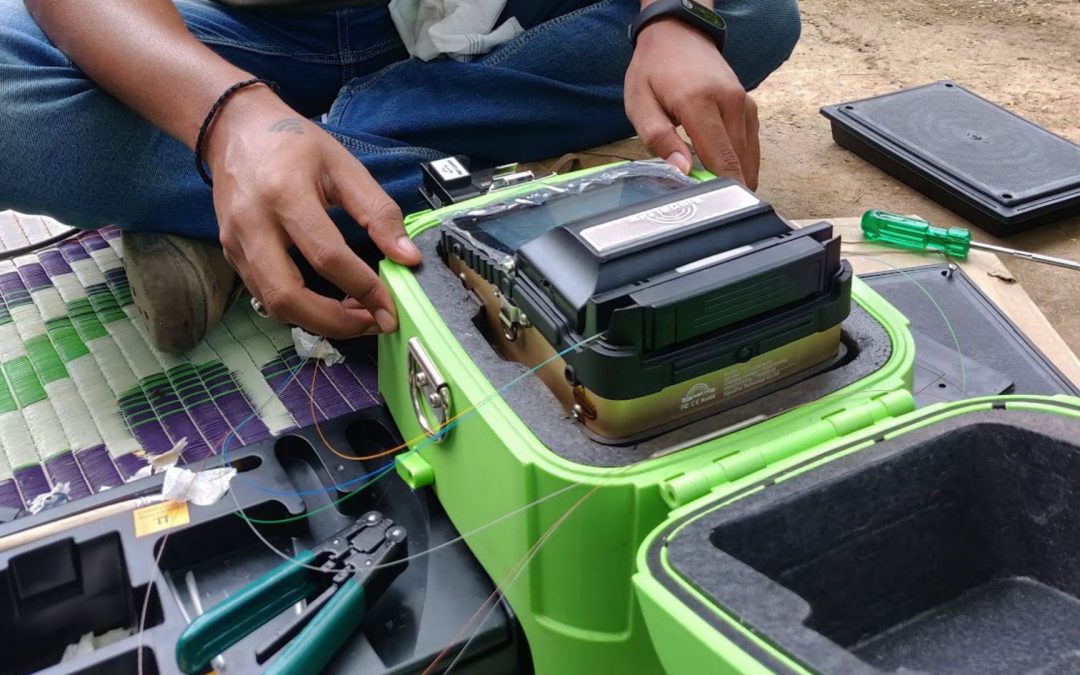
by Jinesh Parekh | Dec 25, 2023 | How to Become an ISP |
[youtube https://www.youtube.com/watch?v=rsXDaDTnR_0&w=560&h=315]
In this video we show you how to join two fiber cables. We have also but a written guide below.
Guide: How to Join Two Fiber Cables
Materials Needed:
- Two fiber optic cables
- Fiber optic connectors (matching cable types)
- Fiber optic cleaver or precision fiber cutter
- Fiber optic stripper or precision wire stripper
- Fiber optic polishing film or pre-polished connectors
- Fiber optic cleaning wipes or lint-free cloth
Steps:
- Preparation:
- Ensure both fiber cables are clean and free from dust or debris. Use fiber optic cleaning wipes or a lint-free cloth to gently clean the cable ends.
- Verify that the fiber cables have compatible connector types (e.g., SC-to-SC, LC-to-LC) to ensure a proper fit.
- Stripping the Fiber Cables:
- Use a fiber optic stripper or precision wire stripper to carefully remove the outer jacket from each fiber cable. Take care not to damage the fibers inside.
- Strip the protective buffer coating from each fiber, revealing the bare glass core and cladding. Avoid any nicks or scratches during this process.
- Cleaving the Fibers:
- Utilize a fiber optic cleaver or precision fiber cutter to make a clean, perpendicular cut at the end of each fiber. A precise cleave is essential for a low-loss connection.
- Polishing (for Regular Connectors):
- If you are using regular connectors (not pre-polished connectors), polishing the fiber ends is necessary for better light transmission.
- Follow the connector manufacturer’s instructions for polishing. Typically, a polishing film is used to achieve a smooth and even finish on the fiber ends.
- Pre-Polished Connectors (Alternative Option):
- Some connectors come with pre-polished fibers, eliminating the need for on-site polishing.
- Carefully follow the manufacturer’s instructions for terminating the fibers into the pre-polished connectors.
- Assembling the Fiber Ends:
- Align the prepared fiber ends of each cable with their corresponding connectors. Be cautious not to touch the exposed fiber ends with your fingers to avoid contamination.
- Epoxy Adhesive (if using regular connectors):
- For regular connectors, apply a small amount of epoxy or anaerobic adhesive to the connector’s ferrule.
- Carefully insert the prepared fiber end into the connector, ensuring it is centered and correctly aligned.
- Curing (if using epoxy adhesive):
- If using epoxy adhesive, place the connector with the inserted fiber into a fiber optic curing oven, following the curing time and temperature specified by the epoxy manufacturer.
- Testing:
- After the adhesive has cured (if applicable), perform a visual inspection of the connector to ensure a clean, well-aligned connection.
- Optionally, use a fiber optic power meter and light source to check for proper light transmission and low signal loss.
By following these steps, you can successfully join two fiber cables. Always handle fiber optic cables with precision and cleanliness to ensure a reliable and high-quality connection. Seek assistance from a professional fiber optic technician if you are uncertain about any step in the process.
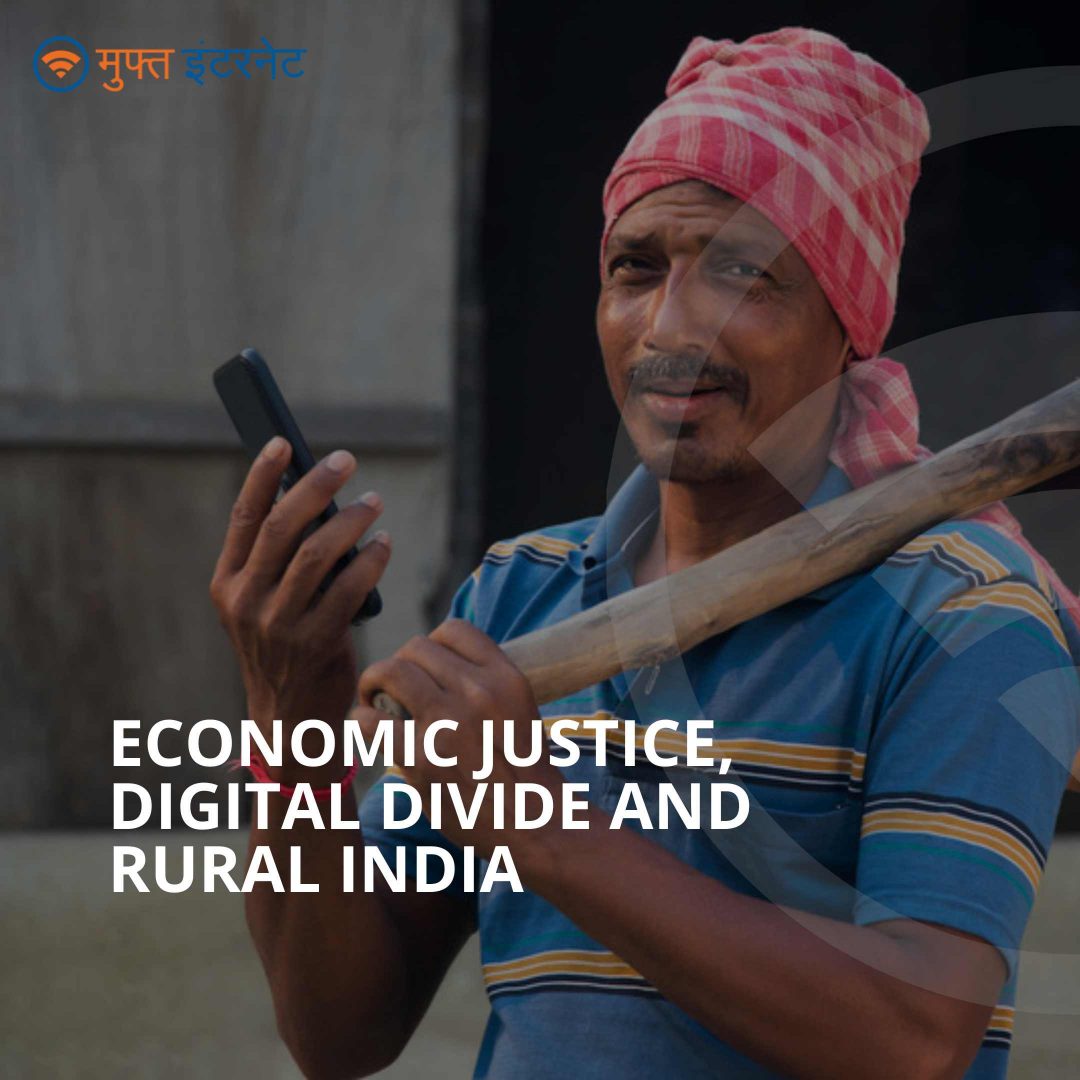
by Jinesh Parekh | Nov 22, 2023 | Digital Divide |
What is Economic Justice?
Economic justice is the idea that the economy will be more successful if it is fairer, and that prosperity and justice go hand-in-hand rather than in opposition to one another.
The goal is to create opportunities for all to thrive.
The idea strives to eliminate the inequality created by capitalism by creating equal opportunities for all members of the economy. Proponents argue that giving everyone a chance to earn a decent, fair income is good for the economy, as putting more money in pockets leads to greater spending on goods and services.
The digital divide is a term that refers to the gap between demographics and regions that have access to modern information and communications technology (ICT), and those that don’t or have restricted access. This technology can include the telephone, television, personal computers and internet connectivity.
To alleviate poverty and misery from this country – we have to ensure equal opportunity to access information for all. This means, connecting every last village with broadband Internet access.
We are one of the youngest countries in the world with tremendous potential to not just uplift ourselves but to also raise the standards for this entire sub-continent. We rise despite our government, not because of it.
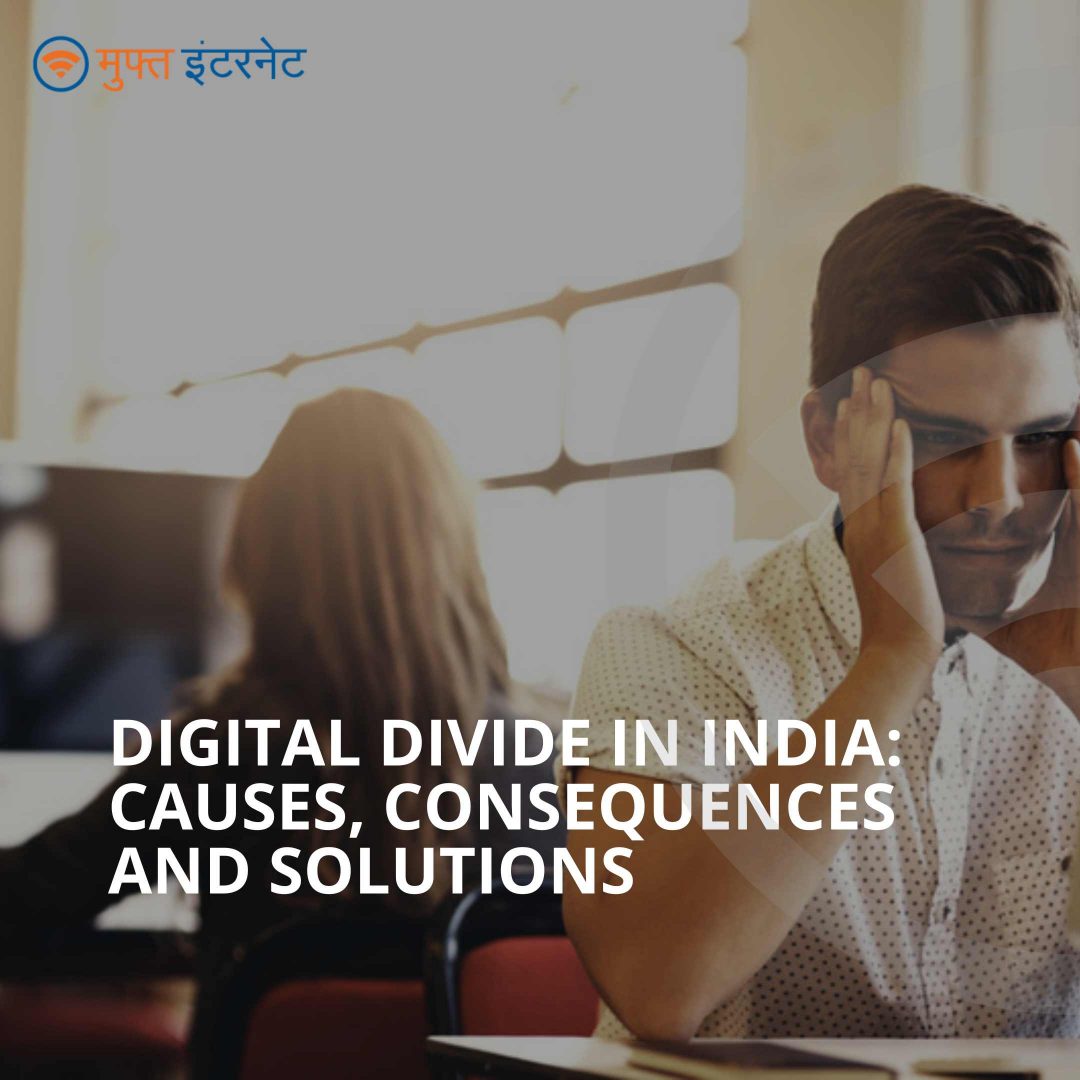
by Jinesh Parekh | Nov 15, 2023 | Digital Divide |
Digital Divide in India: Causes, Consequences and Solutions
The digital divide is the gap between those who have access to and use of information and communication technologies (ICTs) such as the internet and mobile phones, and those who do not. The digital divide can have significant implications for social and economic development, as well as for individual empowerment and participation.
In this blog post, we will explore the digital divide in India, one of the world’s largest and fastest-growing online markets, but also one of the most unequal and diverse. We will look at the causes, consequences and solutions of the digital divide in India, based on various sources of data and research.
Causes of the digital divide in India:
The digital divide in India is influenced by multiple factors, such as:
Geography: India is a vast country with diverse terrain and climatic conditions, which pose challenges for building and maintaining ICT infrastructure. Rural areas, especially in remote or hilly regions, often lack adequate connectivity, electricity, and network coverage. According to the National Family Health Survey 2019–21 (NFHS), only 36.5% of rural households had access to the internet, compared to 62.4% of urban households.
Gender: Women in India face various socio-cultural barriers that limit their access to and use of ICTs, such as lack of education, mobility, decision-making power, safety, and privacy. The NFHS reported that only 33.3% of women had ever used the internet, compared to 57.1% of men. The gender gap was present across all states and was wider in rural areas than in urban areas.
Income: Affordability is a major constraint for accessing and using ICTs in India, where a large proportion of the population lives below the poverty line or on low incomes. The cost of devices, data plans, and other services can be prohibitive for many people, especially in rural areas where incomes are lower and livelihoods are more vulnerable. According to the World Bank, only 14% of the poorest 20% of households in India had internet access in 2017, compared to 72% of the richest 20%.
Literacy: Digital literacy is the ability to use ICTs effectively and safely for various purposes. It requires basic literacy skills as well as technical skills and awareness. In India, where the literacy rate is 77.7%, according to the 2021 census, many people lack the necessary skills and knowledge to access and use ICTs. Moreover, language is another barrier, as most online content and services are in English or other dominant languages, while many people speak regional or local languages.
Consequences of the digital divide in India
The digital divide in India has serious implications for various aspects of development and well-being, such as:
Education: The COVID-19 pandemic has highlighted the importance of online education as a mode of learning and teaching during lockdowns and school closures. However, many students and teachers in India lack access to online platforms or devices, or face issues such as low bandwidth, frequent power cuts, or poor quality content. This affects their learning outcomes and opportunities, especially for disadvantaged groups such as girls, Dalits, Adivasis, and minorities.
Health: ICTs can play a vital role in improving health outcomes and services by providing information, awareness, diagnosis, treatment, monitoring, and telemedicine. However, many people in India are unable to access or use these benefits due to lack of connectivity, affordability, or digital literacy. This affects their health status and access to quality care, especially for rural populations, women, children, elderly, and people with disabilities.
Economy: ICTs can boost economic growth and productivity by enabling innovation, entrepreneurship, e-commerce, e-governance, and financial inclusion. However, many people in India are excluded from these opportunities due to lack of access or use of ICTs. This affects their income generation and employment prospects, especially for informal workers, small businesses, farmers, and artisans.
Society: ICTs can enhance social inclusion and participation by enabling communication, information sharing, networking, advocacy, and civic engagement. However, many people in India are marginalized or silenced due to lack of access or use of ICTs. This affects their voice and agency, especially for women, minorities, activists, and journalists.
Solutions for the digital divide in India
The digital divide in India is a complex and multidimensional problem that requires concerted and collaborative efforts from various stakeholders, such as:
Government: The government has a key role in creating an enabling policy and regulatory environment for ICT development and diffusion, as well as providing public infrastructure, services, and subsidies to ensure universal and affordable access and use of ICTs. Some of the government initiatives in this regard include the BharatNet project, the Digital India programme, the National Digital Literacy Mission, and the Pradhan Mantri Gramin Digital Saksharta Abhiyan.
Private sector: The private sector has a crucial role in innovating and investing in ICT products, solutions, and platforms that cater to the diverse and dynamic needs and preferences of the Indian market, as well as ensuring quality, reliability, and security of their offerings. Some of the private sector initiatives in this regard include the Jio network, the Google Internet Saathi programme, the Facebook Express Wi-Fi project, and the Microsoft Project ReWeave.
Civil society: The civil society has a vital role in advocating and raising awareness about the importance and benefits of ICTs, as well as providing training, support, and resources to enhance digital literacy and skills among various segments of the population, especially the marginalized and vulnerable groups. Some of the civil society initiatives in this regard include the Digital Empowerment Foundation, the Internet Freedom Foundation, the Pratham Education Foundation, and the Barefoot College.
Conclusion
The digital divide in India is a major challenge that needs to be addressed urgently and effectively. ICTs have the potential to transform India’s development and well-being, but only if they are accessible and usable by all. By bridging the digital divide, India can unleash its human and social capital, and achieve its vision of a digitally inclusive and empowered society.





